Auctions
Sotheby’s Stages a Stolid $67.3 Million Frieze Week Sale, Despite Boffo Bidding for Banksy, Basquiat, and Bacon
Other standouts were Eisenman, Fontana, and Scarpitta.
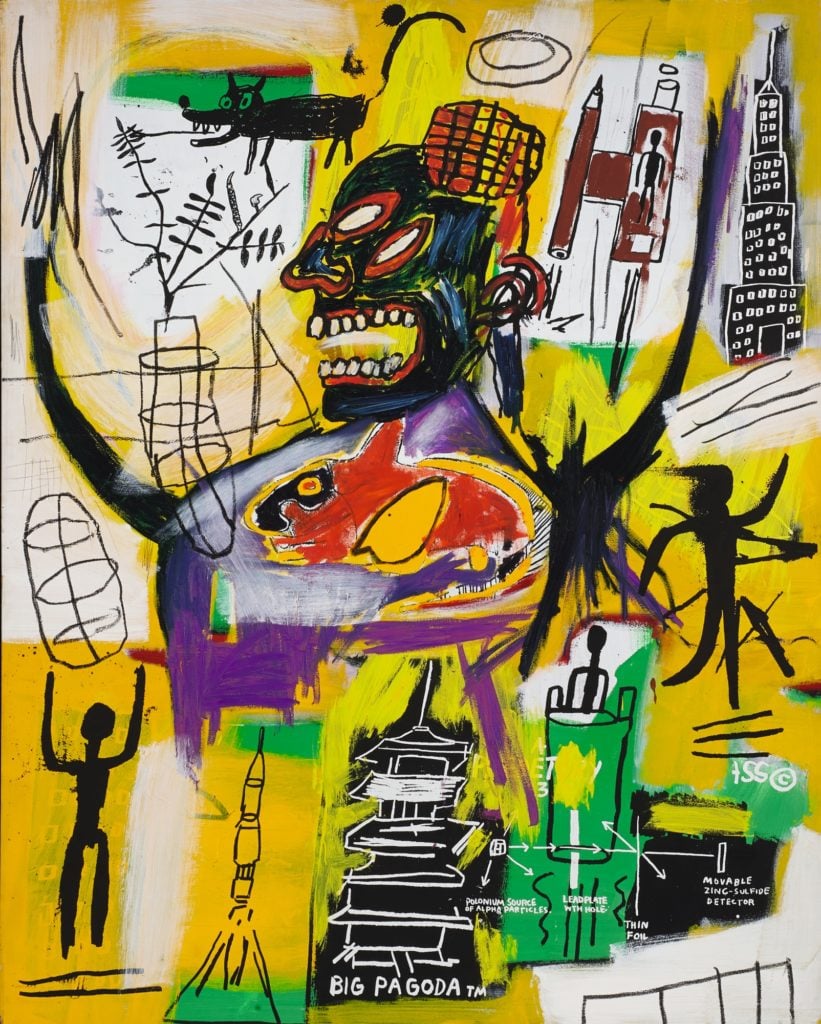
Other standouts were Eisenman, Fontana, and Scarpitta.

Colin Gleadell

The major talking point of Sotheby’s Frieze Week sale is undoubtably the record-smashing $12 million paid for Banksy’s painting of a chimpanzee government, Devolved Parliament (see artnet News’s earlier report on it here). But aside from the street artist’s multimillion-pound monkey painting, how did the rest of the evening go? The pre-sale estimate had been £40.4 million to £56 million ($49.9 million to $69.1 million). When the final hammer came down, the night’s total was at the top end of that range: £54.7 million ($67.3 million). But that was a full 53.2 percent down from last year.
The art market had comfortably hurdled the challenges of today’s economy in Frieze Week’s first two sales, at Christie’s and Phillips. But the stakes were raised at Sotheby’s in this 39-lot sale. Bracketing out Banksy’s attention-devouring presence, this was a journey into more blue-chip territory, headed by the likes of Basquiat, Bacon, and a mix of Italian postwar stars: Manzoni, Fontana, Burri, et al.
Yet even before it all began, it was noticeable that only two lots boasted estimates above the £3 million mark. After a £4 million Manzoni had been withdrawn because of lack of interest, the evening’s pre-sale estimate had already ended up 38 percent down on last year. The final result confirmed the sinking feeling.
This can partly be chalked up to the lack of a single collection (last year they had the £36 million Teiger Collection with its £9.5 million Jenny Saville). Nevertheless, the final total was not ideal for the company, celebrating its first day of private ownership and some change of personnel.
“It was tough getting business in this time,” said senior director of contemporary art Alex Branczik, “largely because of the uncertainty surrounding Brexit.”
Thank goodness for Banksy’s Brexit-skewering painting then.
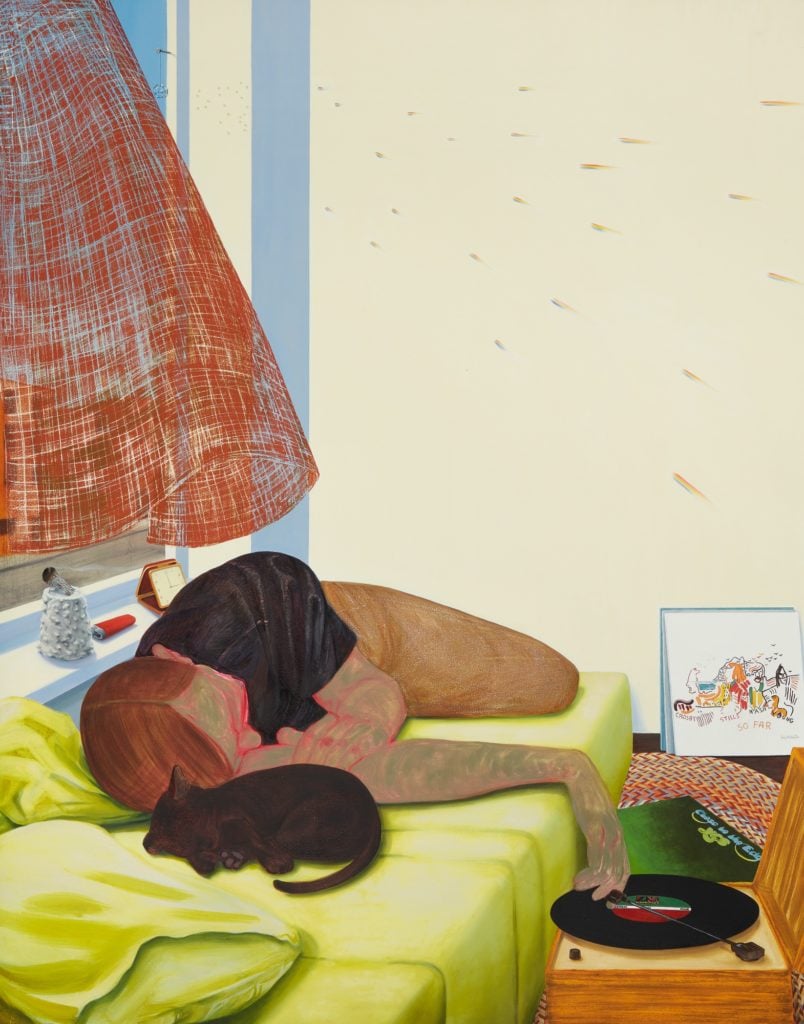
Nicole Eisenman, Close to the Edge (2015). Courtesy of Sotheby’s.
The Sotheby’s sale was less front-loaded with rising stars than Phillips. Here, the main draw was a painting, Close to the Edge, by mid-career artist Nicole Eisenman, who recently starred in the Whitney Biennial. Bidders piled in for the work as it soared above the £150,000 to £180,000, selling eventually to New York’s Acquavella Galleries for a record £639,000 ($785,395).
As mentioned already in our earlier report on the sale of Banksy’s Devolved Parliament, the top prices of the night were for the Banksy (£9.9 million for Devolved Parliament), Basquiat (£9.88 million for Pyro), and Bacon (£2.8 million for Figure with Monkey).
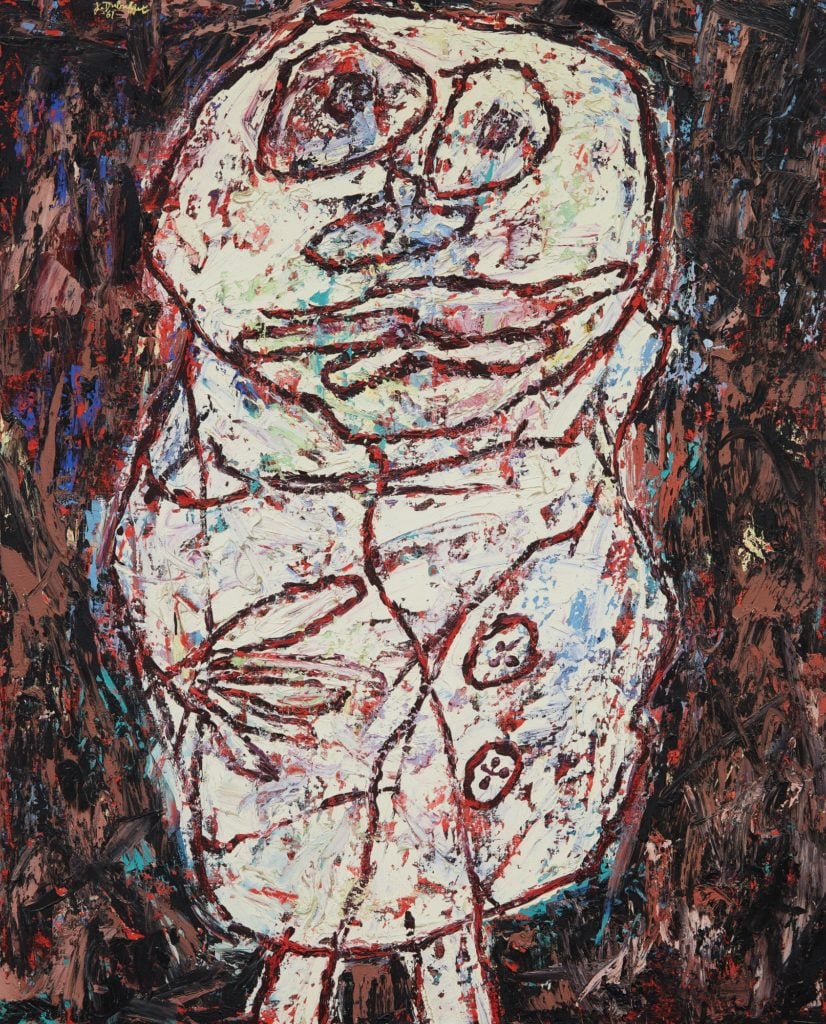
Jean Dubuffet, Mélancolie (1961). Courtesy of Sotheby’s.
After that came a 1961 faux naive Dubuffet portrait, Melancolie, from his famed “Paris Circus” series. The lot saw the old rivalry between the Nahmad and Mugrabi families push the price beyond its £1.2 million high estimate. In the end, however, both were beaten by a collector on the phone who paid a double-estimate £2.65 million ($3.27 million).
Then came the Italians. Sotheby’s stopped holding specialized Italian art sales last year, ostensibly to mix them in a more international context, but equally likely because the market had cooled. In 2014, the auction house’s Italian sale made over £40 million—but then dropped to £18 million by 2017.
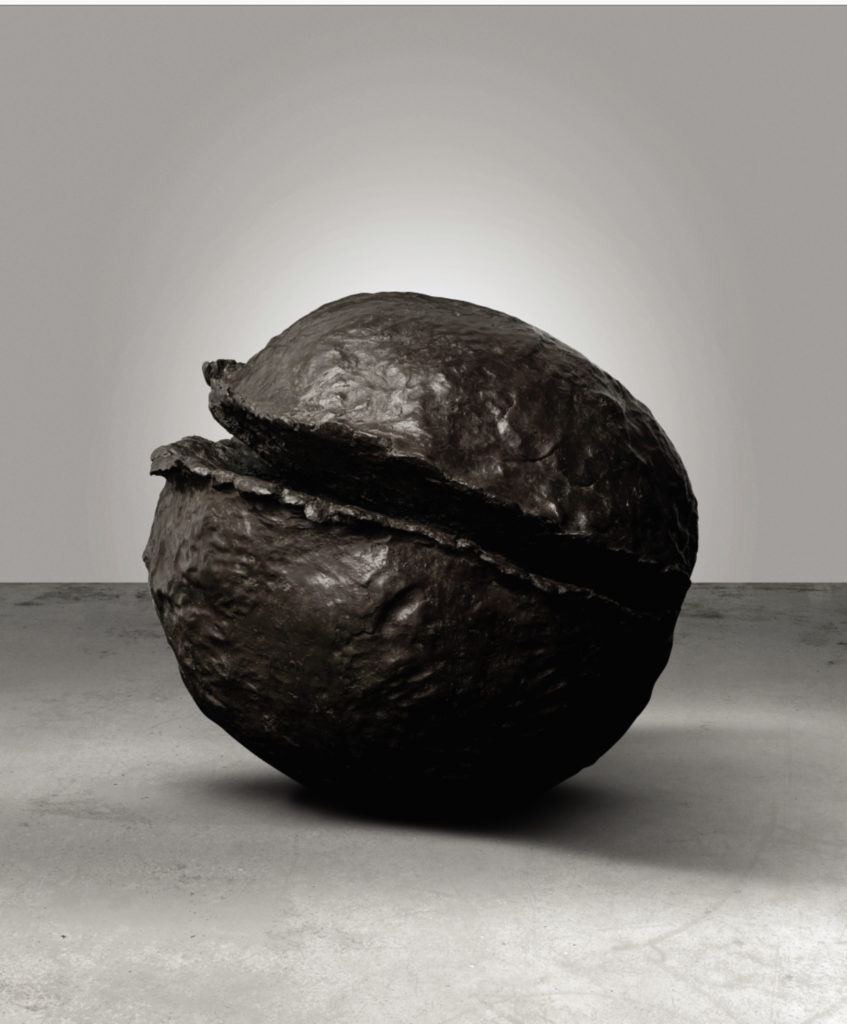
Lucio Fontana, Concetto Spaziale, Natura (1959-60). Courtesy of Sotheby’s.
This year 12 works by Italian artists reaped £13.1 million ($16.2 million). An exceptional “Natura” bronze by Fontana had fetched a sculpture record for the artist in 2004 when it sold for £653,000 to an American collector who was now selling with a £2 to £3 million estimate. Two phone bidders went for it this time and it ended up setting a new Fontana sculpture record at £2.5 million ($3.1 million).
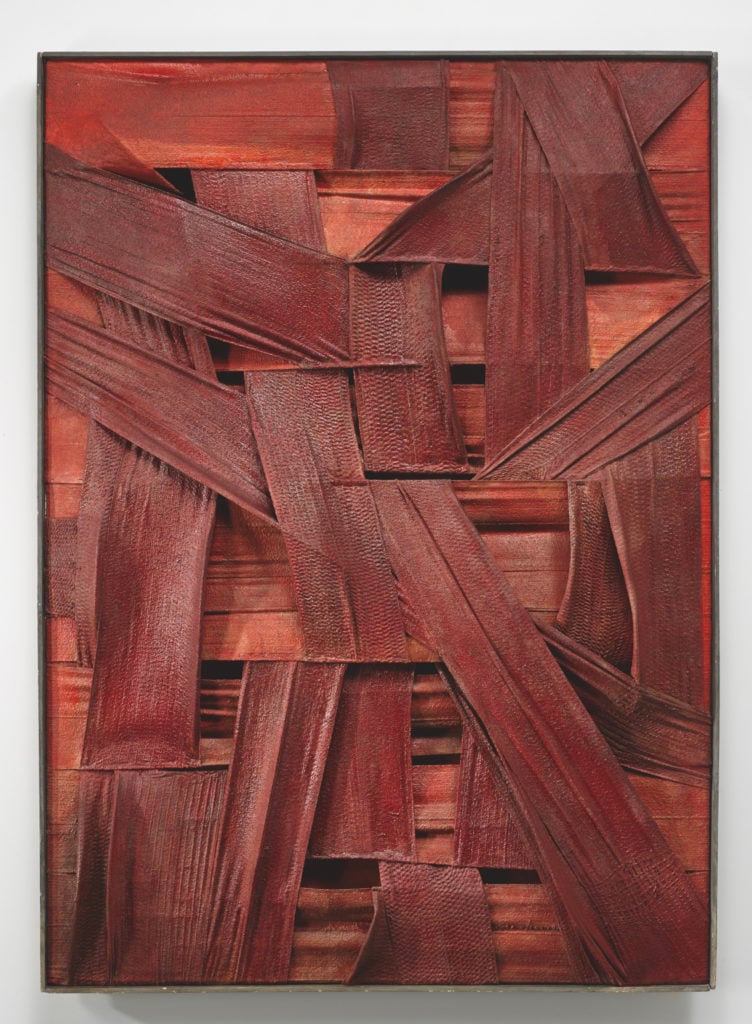
Salvatore Scarpitta, Housing Developed (1960). Courtesy of Sotheby’s.
Making the same price as the Fontana, and also a record, was a 1960 abstract composition of stretched, painted bandages by Salvatore Scarpitta. The work was pursued by dealer Marco Voena before selling above estimate to a phone bidder. The Scarpitta had last sold in 2005 for £114,000.
Another Italian to make the top 10 was Alberto Burri, whose burned plastic, Rosso Plastica (1963), was chased by Belgium’s Vedovi gallery before an Italian collector on the phone bought it, within estimate, for £2 million ($2.5 million). Another Burri, made of sacking, went unsold with a £1.6 million estimate. Further works by Castellani, Burri, and Fontana only sold on their low estimates.
In the end, after three lots were withdrawn, half the lots at Sotheby’s sold within or above estimates. The other half went for on or below their low estimates or not at all. The average price was quite a healthy £1.4 million ($1.7 million). “We were nervous of the market before the sale,” said Branczik, “but it held up pretty well.”